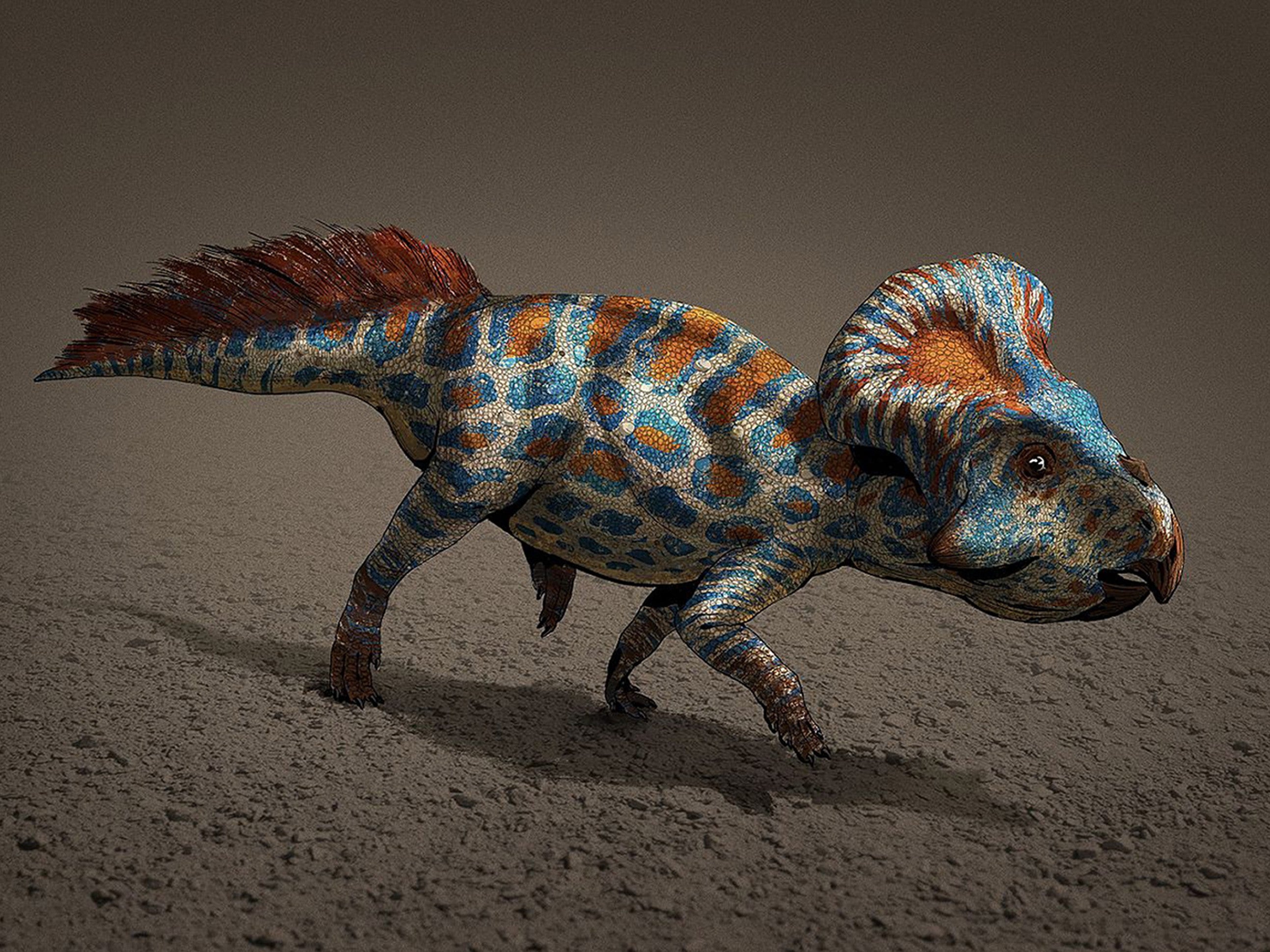Sheep-sized dinosaur attracted sexual partners with huge neck frill, new study suggests
Size mattered for an amorous protoceratops

A sheep-sized dinosaur that lived more than 70 million years ago evolved to have a huge neck frill as a result of sexual selection, according to scientists.
The protoceratops was a 1.8m-long plant-eater that roamed what is now Mongolia's Gobi Desert.
It was previously believed that its elaborate frill was there to protect its neck from predators or possibly as a means of regulating body temperature.
But a new study says its most important function was actually probably to attract mates in a similar way that a peacock uses its plume.
Dr Andrew Knapp, a postdoctoral researcher at the Natural History Museum, said: "In many fossil animals we have unusual structures and traits which aren't really seen in living animals today.
"Protoceratops didn't have any horns but they still had a huge frill.
"Several theories have previously been suggested for the emergence of these neck frills.
"Some have suggested that they were used for protection, others that they played a role in cooling the large herbivores down, or that they allowed individuals to recognise different members of their own species."
But, in research to be published on Wednesday, he and his team analysed 3D scans of 30 complete skulls of the pre-historic animal.
What they discovered was that the neck frills got larger with time, suggesting the growth was a direct result of sexual selection. That is, it was a trait which became increasingly more prominent because it was favoured by members of the opposite sex and, therefore, became more dominant.
While sexual selection appears to be in action in the fossils, the scientist found no obvious evidence of sexual dimorphism - where the two sexes of the same species exhibit different characteristics beyond their sexual organs - although this characteristic may have been present in the creatures.
Dr Knapp said: "There almost certainly were differences between males and females but quite often differences are in body size, so males will be bigger than females or vice versa.
"It could also have been through something else like colouration, which doesn't preserve in fossils."
Subscribe to Independent Premium to bookmark this article
Want to bookmark your favourite articles and stories to read or reference later? Start your Independent Premium subscription today.

Join our commenting forum
Join thought-provoking conversations, follow other Independent readers and see their replies